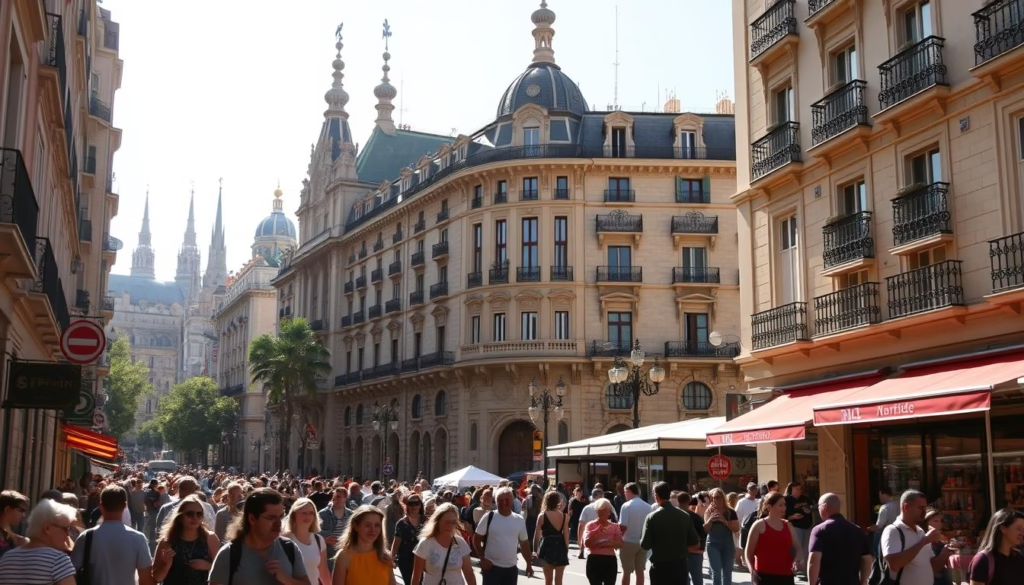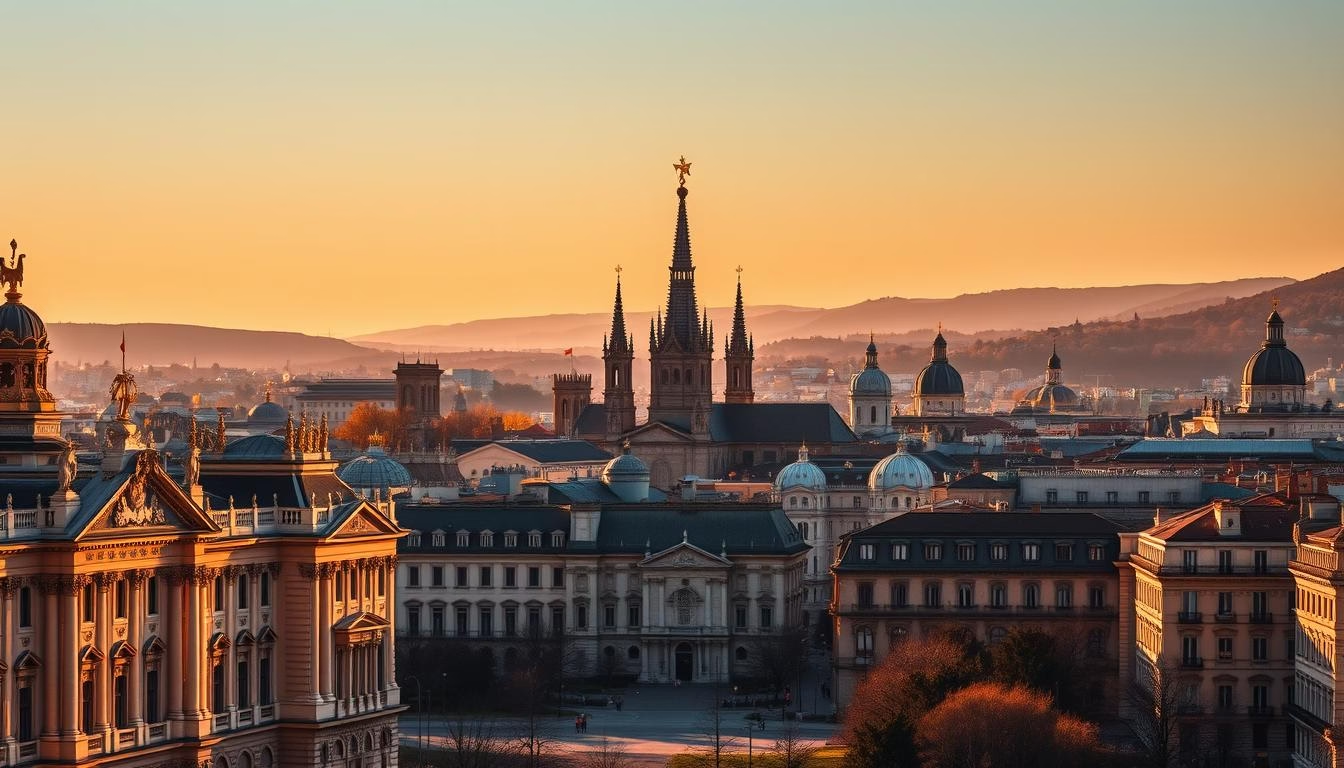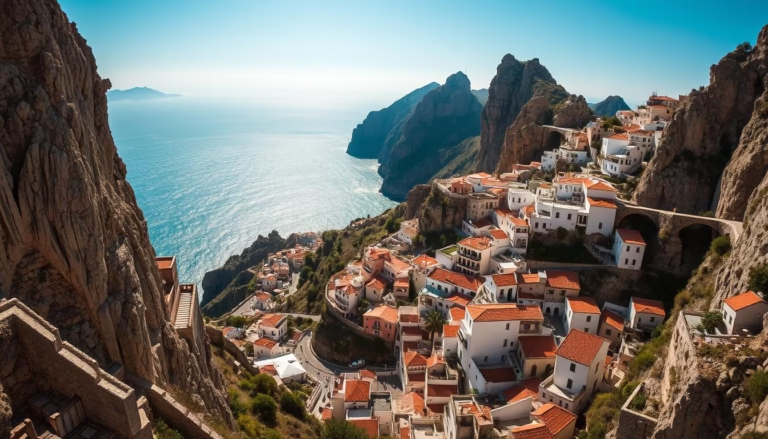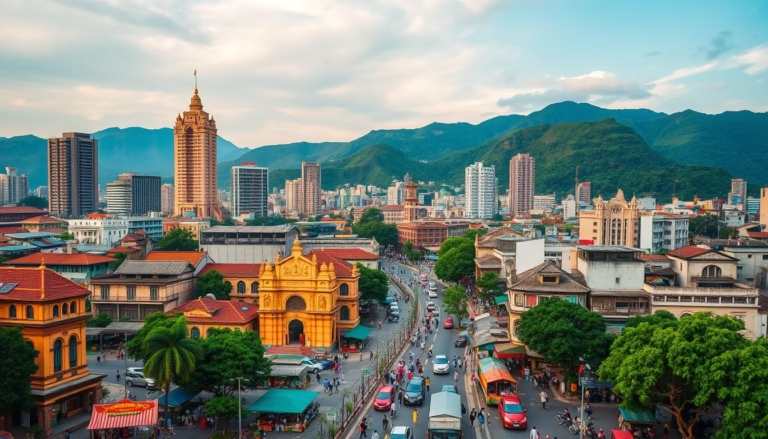Tourist Attractions in Madrid: A Guide to the City’s Top Spots
Welcome to Spain’s vibrant capital, where centuries of history meet modern energy. Madrid’s streets pulse with life, blending royal palaces, world-class museums, and bustling plazas. Whether you’re marveling at masterpieces by Goya or savoring tapas in a sunlit square, the city invites you to embrace its authentic spirit.
This cosmopolitan hub thrives on diversity, welcoming visitors with open arms. Locals chat over café con leche, while lively markets like Mercado de San Miguel showcase global flavors. After dark, the energy shifts seamlessly to flamenco rhythms and rooftop terraces that glow under starlit skies.
Our guide focuses on must-see spots and lesser-known treasures. Discover grand landmarks like the Royal Palace alongside hidden courtyards whispering stories of the past. Every corner reveals layers of Spanish culture, from Baroque architecture to avant-garde galleries.
Key Takeaways
- Madrid serves as Spain’s capital city, blending historic grandeur with contemporary flair
- Iconic museums and royal sites highlight centuries of artistic and political legacy
- The city’s inclusive vibe creates a melting pot of global influences
- From daytime explorations to nightlife adventures, Madrid offers nonstop discovery
- This guide reveals both famous attractions and local favorites for a well-rounded experience
Introduction to Madrid’s Vibrant City Life
From dawn till dusk, Madrid’s streets pulse with a lively rhythm that invites everyone to join the dance. This Spanish capital thrives on diversity, where neighbors chat over café con leche and newcomers share stories in multiple languages. The energy here feels contagious – a blend of flamenco beats drifting from open windows and the clatter of silverware in sunlit plazas.

You’ll notice how seamlessly global influences mix with local traditions. Over a third of residents hail from abroad, creating a cultural mosaic reflected in food markets and street festivals. While English helps in central areas, a simple “¡hola!” opens doors to deeper connections with shopkeepers and artists.
What makes this city special is its refusal to trade authenticity for convenience. Family-run tapas bars stand proudly beside modern fusion restaurants, both packed with regulars. Evening strolls reveal grandmothers swapping gossip on balconies while skateboarders glide through historic squares – proof that tradition and progress coexist effortlessly here.
Must-See Tourist Attractions in Madrid
Madrid’s greatest treasures cluster together like jewels on a crown. Nearly all top spots sit within a 2-mile radius, letting you admire royal palaces and 17th-century plazas before lunch. Start at the Royal Palace – Europe’s largest royal residence – then stroll to Plaza Mayor’s ochre arches just 15 minutes away.
First-time visitors love how landmarks flow naturally. Gran Vía’s glittering theaters lead straight to Puerta del Sol’s buzzing energy. Snap photos of the Bear and Strawberry Tree statue, then explore side streets hiding artisan shops. Pro tip: Mornings beat crowds at popular places.
| Landmark | Walk Time | Don’t Miss |
|---|---|---|
| Royal Palace | 0 min | Throne Room frescoes |
| Plaza Mayor | 12 min | Sunday stamp market |
| Puerta del Sol | 8 min | Kilometer Zero marker |
| Gran Vía | 18 min | Art Deco buildings |
Save afternoons for hidden things most miss. Peek into Mercado de San Miguel’s gourmet stalls or relax in Sabatini Gardens. With major sites checked off early, you’ll uncover Madrid’s true rhythm – where flamenco guitarists play beside modern art murals.
Historic Landmarks and Royal Heritage
The heart of Spain’s monarchy beats strong in Madrid’s preserved palaces and government buildings. These architectural gems reveal how royal power and civic leadership shaped the city’s identity across centuries. Each structure tells a story – from gilded throne rooms to Renaissance-era council chambers.
Royal Palace of Madrid
Though no longer a royal residence, this building remains a dazzling symbol of Spain’s imperial past. Wander through halls adorned with Velázquez paintings and intricate tapestries. The throne room’s ceiling frescoes will make you pause – they’re considered among Europe’s finest Baroque artworks.
Casa de la Villa and Casa de Cisneros
Just steps away, two lesser-known treasures showcase the city’s administrative evolution. Casa de la Villa’s slate-gray façade hides ornate meeting rooms where mayors governed for 300 years. Across the plaza, Casa de Cisneros displays delicate Plateresque stonework – a style unique to Spanish Renaissance architecture.
Guided tours explain how these landmarks coexisted. Kings commissioned grand projects while city leaders managed daily life. Together, they form a timeline of Madrid’s growth from medieval outpost to modern capital.
Immersive Museum Experiences
Madrid’s museums transform art appreciation into a living dialogue between past and present. These cultural powerhouses don’t just display masterpieces – they invite you to walk through centuries of creative evolution. Prepare for encounters with iconic works that shaped global art movements.
Museo del Prado
The Prado Museum stands among the world’s greatest art collections, rivaling Paris’ Louvre. Its halls overflow with over 7,600 paintings, including Velázquez’s Las Meninas and Goya’s haunting Black Paintings. Time your visit during free admission hours (6-8 PM weekdays, 5-7 PM Sundays) to experience European classics without crowds.
Reina Sofía National Art Centre
Twentieth-century rebellion comes alive at Reina Sofía. Picasso’s monumental Guernica anchors a collection celebrating Spain’s avant-garde spirit. Surrealist works by Dalí and Miró share space with rotating exhibits that challenge traditional perspectives.
Maximize your art immersion with the Paseo del Arte Pass, granting access to three major museums. Allow full days for each venue – the Prado alone spans five centuries across 100+ rooms. Between visits, recharge in the Botanical Garden beside golden statues of Spanish monarchs.
Lively Public Squares and Plazas
Madrid’s plazas pulse with centuries of stories, where every cobblestone whispers tales of gatherings past. These open-air stages host everything from spontaneous guitar solos to generations-old traditions. Let’s explore two iconic spaces that define the city’s social heartbeat.
Plaza Mayor: Where History Meets the Present
Step into this 17th-century square framed by crimson buildings and 237 wrought-iron balconies. For 400 years, it’s hosted royal coronations, bullfights, and today’s lively cafés. Morning light reveals intricate frescoes on Casa de la Panadería, while evening shadows bring street performers and clinking wine glasses.
Puerta del Sol: Madrid’s Beating Heart
All Spanish roads begin here at the kilometer zero marker. By day, shoppers flock to Gran Vía boutiques branching from this hub. As midnight approaches on December 31st, crowds gather to eat twelve grapes – one for each clock chime – continuing a 120-year custom.
| Feature | Plaza Mayor | Puerta del Sol |
|---|---|---|
| Year Established | 1617 | 15th Century |
| Key Tradition | Sunday stamp market | New Year’s grapes |
| Architectural Style | Spanish Habsburg | Neoclassical |
| Must-See Element | Felipe III statue | Bear & Tree statue |
Both spaces connect to winding streets bursting with tapas bars and artisan shops. Early birds capture golden-hour photos, while night owls join locals debating futbol over _cañas_ (small beers). Whether you’re people-watching or tracing history, these plazas offer Madrid’s essence in every sun-warmed stone.
Enjoying the Green Oasis of El Retiro Park
Tucked away from urban buzz, El Retiro Park offers 350 acres of shaded pathways and sparkling lakes. This 17th-century retreat welcomes runners, readers, and families seeking fresh air. Its grand entrance frames a serene lake where rowboats glide beneath Alfonso XII’s marble monument.
Picnic and Recreation Areas
Spread your blanket near the park’s artificial mountain or under century-old trees. Designated picnic zones buzz with chess players and guitar strummers. Weekends bring impromptu dance sessions beside the Fallen Angel statue – Europe’s rare public devil depiction.
Rowboat Rides and Garden Paths
Rent colorful boats by the hour to paddle past duck families and willow reflections. Afterward, follow gravel trails through themed gardens. The hidden Rosaleda area explodes with 4,000 roses each spring, while the Crystal Palace’s glass dome shelters rotating art exhibits.
| Feature | Best Time | Activity Tip |
|---|---|---|
| Central Lake | Morning | Boat rentals open at 10 AM |
| Crystal Palace | Afternoon | Check for free art installations |
| Rose Garden | May-June | Visit weekdays for quiet photos |
Wanderers often stumble upon surprise puppet shows or outdoor yoga classes. With bike rentals and shaded benches aplenty, this Retiro Park escape proves Madrid knows how to balance city life with nature’s calm.
Exploring Authentic Madrid Neighborhoods
Madrid’s true character shines brightest in its distinct areas, where local rhythms and flavors paint a vivid portrait of daily life. Two districts stand out for showcasing the city’s dual personality: the electrifying energy of Sol and the culinary heartbeat of La Latina.
Sol – The Heart of the City
True to its name (“sun” in Spanish), Sol radiates energy from dawn until well past midnight. This central hub connects Madrid’s major landmarks, with Gran Vía serving as its glittering spine. By day, shoppers explore flagship stores; by night, theaters light up with Broadway-caliber shows.
La Latina for Foodies
Food lovers flock to this maze of cobbled streets where aromas of saffron and smoked paprika linger. Over 50 restaurants and tapas bars compete for attention, but Mercado de San Miguel steals the show. Its iron-and-glass structure shelters stalls serving razor clams, Iberian ham, and vermouth on tap.
| Neighborhood | Vibe | Must-Visit Spot | Best Time | Signature Experience |
|---|---|---|---|---|
| Sol | 24/7 energy | Gran Vía rooftops | Evening | Sunset cocktails with skyline views |
| La Latina | Culinary playground | Cava Baja Street | Lunch | Tapas hopping with locals |
These areas work in perfect harmony. After exploring Sol’s architectural wonders, walk 15 minutes to La Latina’s taverns. Many locals recommend starting with classic patatas bravas before trying modern twists like truffle-stuffed croquetas.
Whether savoring slow-cooked cocido madrileño or dancing until sunrise, both districts prove Madrid’s magic lies in its ability to honor tradition while embracing innovation. Every meal here becomes a conversation between centuries-old recipes and bold new flavors.
Cultural Highlights and Flamenco Flair
Madrid’s cultural tapestry comes alive through fiery rhythms and bold artistic experiments. The city thrives as a living stage where tradition collides with avant-garde creativity. From foot-stomping performances to interactive installations, every experience reveals Spain’s soul.
Experience a Passionate Flamenco Show
Flamenco isn’t just dance – it’s raw emotion set to guitar riffs and soulful cante (singing). Traditional tablaos like Corral de la Morería offer front-row seats to this UNESCO-recognized art. The intimate venues let you feel each foot stomp and hear every raspy lyric.
Modern shows blend classic techniques with new influences. Some performances add jazz elements or digital projections. Either way, you’ll leave understanding why Spaniards call flamenco duende – the spirit of irresistible emotion.
Artistic and Cultural Centers
Centers like Matadero Madrid redefine cultural spaces. This former slaughterhouse now hosts experimental collections and sound installations. Guided tours explain how architects transformed industrial spaces into galleries.
Conde Duque Cultural Center offers another perspective. Its military-barracks-turned-studios showcase emerging Spanish artists. Check their schedule for pop-up flamenco fashion exhibits or workshops on traditional guitar-making.
| Feature | Traditional Experience | Modern Experience | Highlights |
|---|---|---|---|
| Venue Type | Historic tablaos | Converted industrial spaces | Architectural contrasts |
| Art Focus | Flamenco purity | Mixed-media experiments | UNESCO recognition |
| Engagement | Live music sessions | Interactive exhibits | Artist meetups |
Both worlds coexist beautifully here. Attend a morning flamenco workshop, then explore digital art projections at night. This duality makes Madrid’s cultural scene endlessly fascinating.
Discovering the Iconic Temple of Debod
Madrid holds an unexpected treasure from ancient Egypt – the Temple of Debod. This 2nd-century B.C. structure once stood along the Nile before being gifted to Spain in 1968. Today, its sandstone walls rise near Parque de la Montaña, offering free access to hieroglyphics and weathered reliefs.
Originally built in Nubia (modern-day Sudan), the building honors gods Amun and Isis. Careful reconstruction preserved its two pylons and inner chambers, though some carvings show wear from time and relocation. Sunset transforms the site, casting golden light on its reflection pool.
For deeper context, explore the temple’s detailed history, including its role in a UNESCO-led rescue mission. While not as polished as Egypt’s grandest sites, this monument whispers stories of pharaohs and Spanish-Egyptian diplomacy. Arrive early to avoid crowds and watch dawn illuminate its storied stones.






